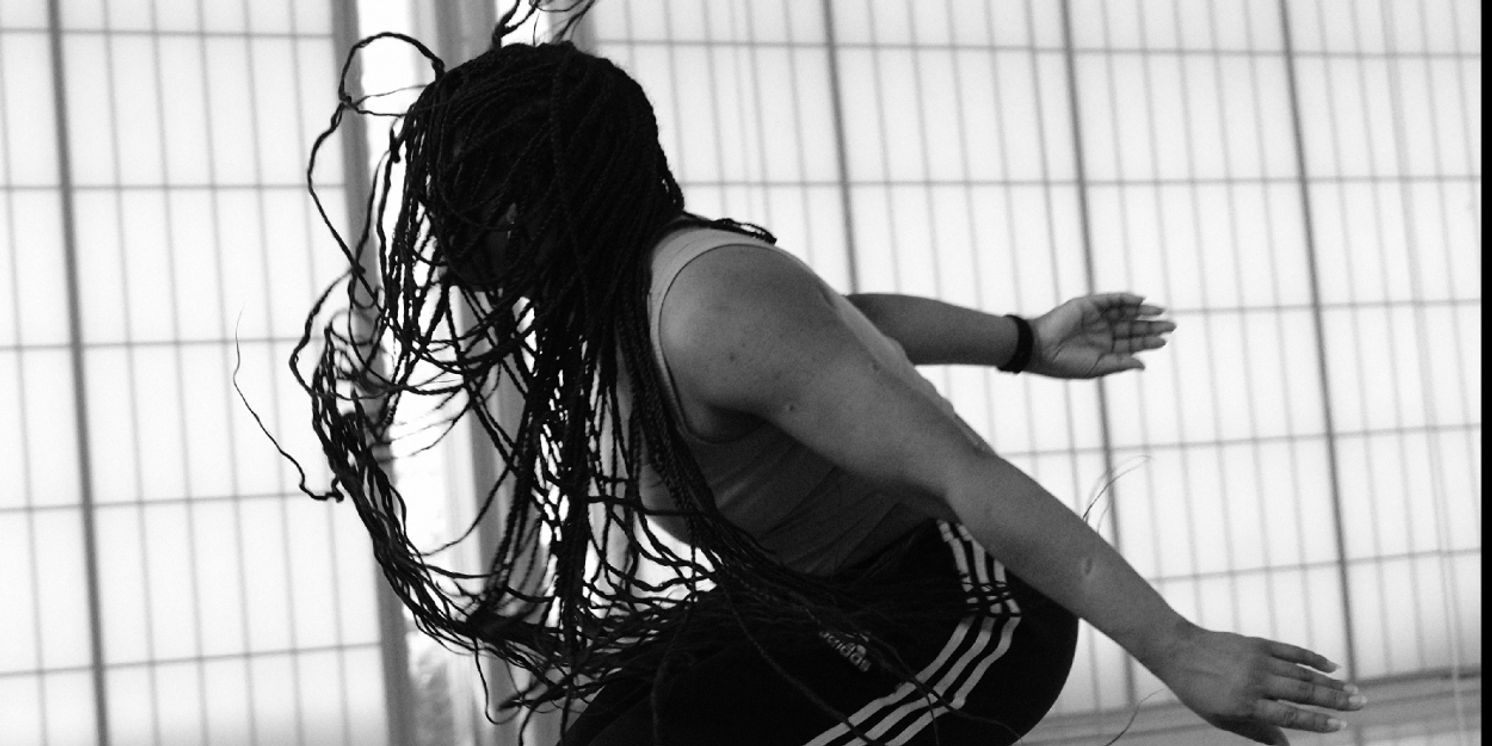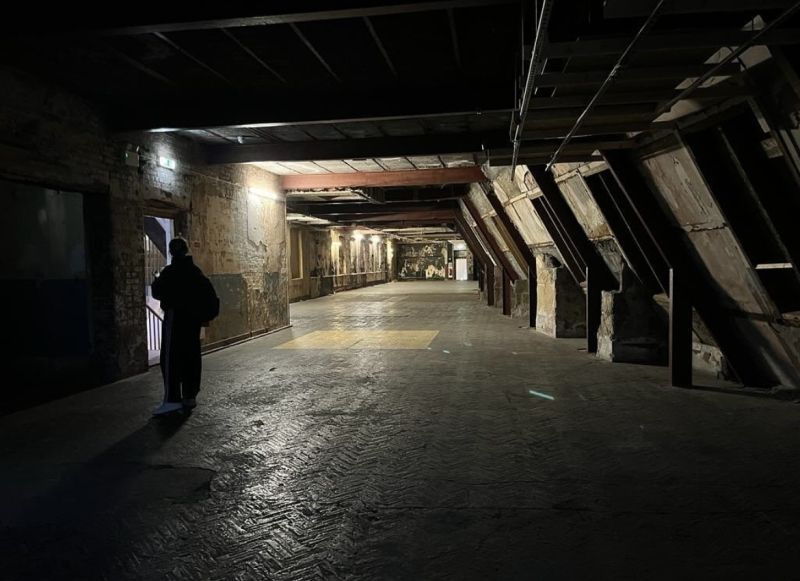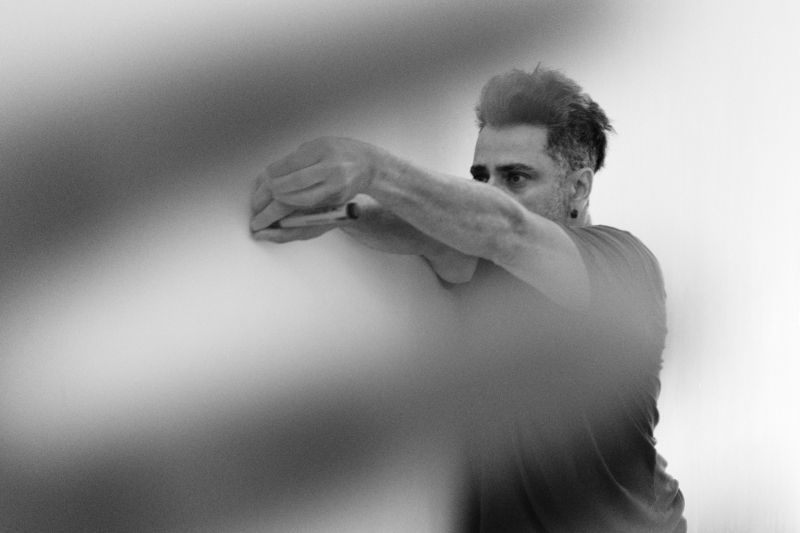Review: BOUND, Bargehouse
Spread over five floors, this immersive meditation on grief runs until 7th September.

![]() As shown in Amber Jarman-Crainey’s Bound (stylised as B O U N D), talking to the dead is not solely the preserve of spiritualists and mediums. Her immersive meditation on grief manifests in the form of nine storylines where the living pour their hearts to those who have passed.
As shown in Amber Jarman-Crainey’s Bound (stylised as B O U N D), talking to the dead is not solely the preserve of spiritualists and mediums. Her immersive meditation on grief manifests in the form of nine storylines where the living pour their hearts to those who have passed.
This site-specific work is set across five floors of the Bargehouse, a multi-storey building behind the OXO tower. Its crumbling walls and concrete steps are as much part of this experience as the more detailed environments: one level has a cemetery-like garden from Lara Sanjar while elsewhere one pillar has been enveloped in long strands of willow by Sara Holmes and Susie Carlino’s Creative Draping Academy has turned one room into an ethereal chamber where one can hide and think amid the diaphanous material. (These spaces will be open as a free installation outside of performance times.)

The audience is free to explore as they wish with Jarman-Crainey making inspired use of every nook and cranny. Around, below and above us, the performers tell the stories more through movement than verbalising. They walk, dance, crawl, bounce around or sometimes just sit with their thoughts staring at a black-and-white picture or semi-hidden in a dark corner. When they do speak, the output ranges from chilling screams and anguished howls to Dominic Coffey’s intense chat with an unseen therapist and Angela Harvey’s moving soliloquy while grasping an old jacket hanging from the ceiling.
Elizabeth Kubler-Ross developed the five (later seven) stages of grief in the 1960s and all of them - denial, anger, bargaining, depression and the rest - seem to be all present and correct somewhere in here, either in physical form or expressed through an art work. Feelings are evoked through sound as much as anything else with composer Ann Warren conjuring up unearthly hums from a speaker in one area and live music elsewhere.
In Kubler-Ross' view, the stages of grief are not to be seen as an orderly progression but a far more complex and messy journey. Similarly, the stories in Bound are carried out in parallel with some overlapping; at one point, we were transfixed by Harvey sobbing in a stairwell while Lucija Romanova could be heard bellowing manic laughter from the next level up. This enmeshing sometimes highly immersive and sometimes distracting enough to pull us out of the immersion.
Jarman-Crainey’s concept and design has taken care to focus the attention on those who are left behind. The departed are only briefly mentioned or alluded to with few details of how or when they passed. Religion is notable by its absence and there are barely any references to the hereafter. Rather, the focus is on the here and now, the very real sensation that the tragedies, whenever they happened, are still vividly raw in the minds of the characters.

The setup means that the storytelling does not offer easy narratives to follow. There are some very obvious outbursts of anger and sadness and the abstract nature of the art works and performers’ movements lend themselves to interpretation and extrapolation, allowing us to reflect on and find relevance in our own losses. There’s no denying the emotional intensity of the set pieces but the distributed nature of the plotlines, though, can take away from the power of what we see, especially if we first meet a character midway through their tale.
Terry Pratchett spoke of death as “an inconvenience, true enough” and some of the spaces can be awkward with the audience leaning over each over in a doorway so they can catch a scene playing out in a small room.
This is very much of the walk-and-gawk variety of immersive with a brief but poignant few one-to-one instances of audience interaction. Fans of companies like Punchdrunk, Midnight Circle or Rematch will enjoy being able to stalk a particular character as they journey around the building or, alternatively, delve into the elaborate room settings at their own leisure. Those who like the kind of context or structure seen in Phantom Peak or Layered Reality's shows may find Bound a more disconnected and impenetrable affair.
Bound continues at Bargehouse until 7th September.
Photo credit: Rachel Patrice Fallon
Reader Reviews
Videos

